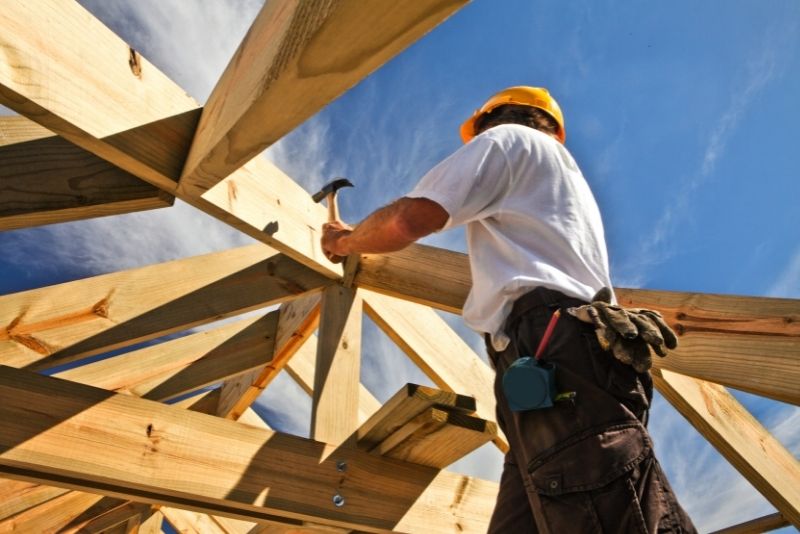The rising cost of construction

Professional Builder estimates that Great British saved an average of £1,808 by working from home over the last year – and that 45% are spending these savings on home improvements or maintenance.
On top of that, new build housing demand has continued to grow, with developments popping up across the UK and construction now one of our fastest growing economies.
All of this should be great news for the trade, but it has been marred by difficulties to obtain skilled workers and afford increasingly expensive materials.
Why are construction materials so expensive?
In early 2021, Wickes warned of a price rise amid the shortage of materials, which has certainly come to fruition. The Federation of Master Builders reported that 98% of its members experienced material price increases through the second quarter of 2021. In essence, demand has outstripped supply, and that alone has pushed prices up.
The UK also imports roughly 60% of the materials used in construction, from Europe, including around 90% of the softwood used in new build homes. Pre-pandemic and pre-Brexit, obtaining these materials was far less challenging.
Why are building materials running short in the UK?
It isn’t particularly reassuring, but this shortage isn’t a UK-specific problem, supply chain disruption is being experienced at a global level.
The shipping industry has experienced significant difficulties during the pandemic, with congested routes and container cancellations remaining an ongoing problem.
The 6-day blockage of the Suez Canal by the 1,300ft long container ship ‘Ever Given’, continues to cause supply problems to this day, according to insights provider Dun & Bradstreet, with the UK being one of the most impacted European countries.
On the roads, we have seen the red tape of Brexit teamed with a shortage of HGV drivers, leaving UK builders more reliant on domestic production. According to the Road Hauliers Association, the industry is now short of 100,000 drivers. Despite the ongoing challenges, it has been reported that that the number of construction firms reporting supplier delays reduced from 47% to 34% towards the end of 2021.
Additionally, production dropped on some items, with the Construction Leadership Council (CLC) reporting that cement production dropped by 11.4% in 2021.
Add increased demand, fuel prices, price of material, massive government projects draining supplies and increased inflation rates – it’s clear that there is no one reason as to why building materials are running short in the UK.
However, the result is that prices of building work increased by almost 25% between October 2020 and October 2021.
Will building materials come down in price?
The price of materials has increased significantly: up to 50% for timber-based products, and up to 100% for OSB and other sheet materials, according to the CLC. And new Health and Safety regulations could see a further increase in prices.

As one example, demand for fire-compliant cladding following the Grenfell Tower tragedy has seen the cost of cladding increase by over 5%, and is likely to continue to rise.
It is believed that the construction materials shortage is starting to ease, however, that doesn’t mean that prices are going to drop any time soon. Although reports and opinions vary, the CLC believes that further price increases are anticipated throughout 2022.
Does inflation mean you are now underinsured?
We spoke to A-Plan’s Commercial Director, Richard Easterbrook, to gain his insights on how well the trade is managing the changes versus the increasing cost of materials.
“In a recent homebuilding and renovating poll conducted by the Home Builders Federation, 96% of respondents said they had struggled to afford the cost of materials in 2021. Like anything that increases in value, ensuring you are correctly covered is key.
“While we often think of diamonds, watches and other collectables in this way, not many think about brick, steel and timber! Your stock is now far more costly to purchase than it was a year ago and it’s a huge challenge for the trade to fix contract prices, which could rise by as much as 50% over the course of the year.
“It’s so important to review mid-term, not just at renewal, to take the time to look at your documents now to see what cover you have, and to then obtain specialist advice to ensure you’re covered for inflation.
“For those who own a workshop or warehouse that still contain stock purchased prior to price rises, your items would have seen the highest growth. If these materials were stolen, or destroyed in a fire or flood, would you be able to cover the cost of the price increases to replace them?”
With prices increasing, it is worth contacting your insurer or broker to ensure you have the correct protection in place. Our specialist commercial team is always happy to answer any questions you may have. You can find your local branch here.



